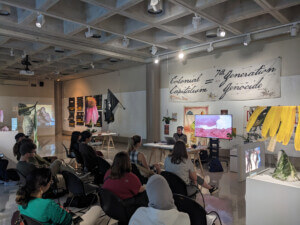Following the recent release of its tenth annual NCARB by the Numbers report, which included demographic data on Architect Registration Examination (ARE) pass rates for the first time, the National Council of Architectural Registration Boards (NCARB) has now published its second in-depth Baseline on Belonging report with the National Organization of Minority Architects (NOMA) on diversity and attrition as they relate to the winding and frequently hurdle-filled path to obtaining architectural licensure.
While the previous NCARB and NOMA deep-dive, Baseline on Belonging: Experience Report, identified the myriad effects that race, ethnicity, gender, age, and firm size can have on candidates documenting professional experience toward the Architectural Experience Program (AXP), the 2021 Baseline on Belonging: Examination Report synthesizes data collected from survey respondents related to the barriers encountered by candidates while prepping for and taking the ARE. The rigorous six-part exam is required by all state licensing boards and passing is a pivotal step in securing an architectural license.
The first Baseline on Belonging survey was released in early 2020 to over 70,000 individuals and received over 5,000 complete responses, including over 2,800 from people of color and nearly 2,500 from women.
As detailed in a press release, ARE-related impediments experienced by candidates are frequently encountered in the areas of financial support, coaching and mentoring, and the overall costs associated with the exam. Data collected by NCARB and previously shared by AN has found that candidates of color and older candidates have lower pass rates than peers that are white and/or younger. “Survey data from the full report highlights how factors like firm support and financial limitations may disproportionately impact candidates over 40 years old and people of color—especially women of color,” NCARB elaborated.
In its gathering and examining of demographic data regarding pass rates, NCARB and NOMA hope to take action and impart positive change in the key areas mentioned above—areas that, as evidenced in the new report, can have a detrimental impact on underrepresented groups entering the architecture profession. Per data from NCARB’s Record holders, approximately 22 percent of architects in the United States identified as a racial or ethnic minority in 2020. This figure represents a substantial increase from previous years, albeit one confined to Hispanic or Latino and Asian architects. Currently, 2 percent of architects identify as Black or African American, a figure that has failed to grow over the past decade.
“The disparity in architecture exam pass rates is hard to see, but facing that number head on empowers us to ask better questions, and create new programs and policies that help ensure a successful career in architecture is both accessible and achievable to those historically marginalized by the process,” said Jason Pugh, president of NOMA and a senior associate at Gensler. “The path to licensure is long, non-linear, costly, and strenuous, but even more so without the appropriate milestones to benchmark successes for people of color—and most drastically for Black and Latina women. NOMA leadership hopes to work collectively with the architecture collaterals to address the hurdles and challenges outlined within these clear findings over the next few years, and move us toward greater equity and representation overall.”
Below are the key findings, including corresponding infographics, as detailed in the summary of the new Baseline on Belonging: Examination Report (the full 100-page report can be viewed here):
The cost of the exam is a financial burden for many candidates:
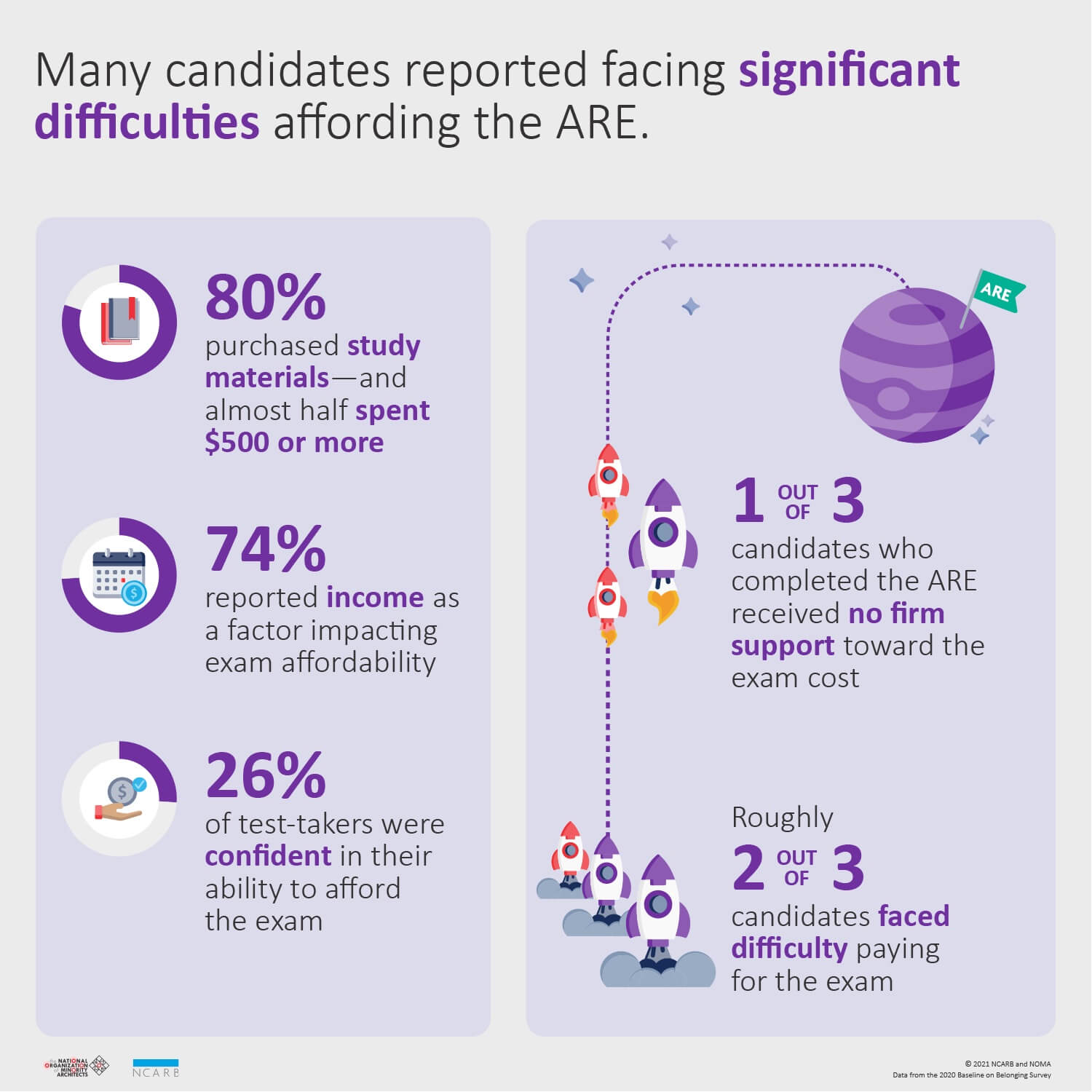
African American and Latino candidates are less likely to receive firm support for the exam:
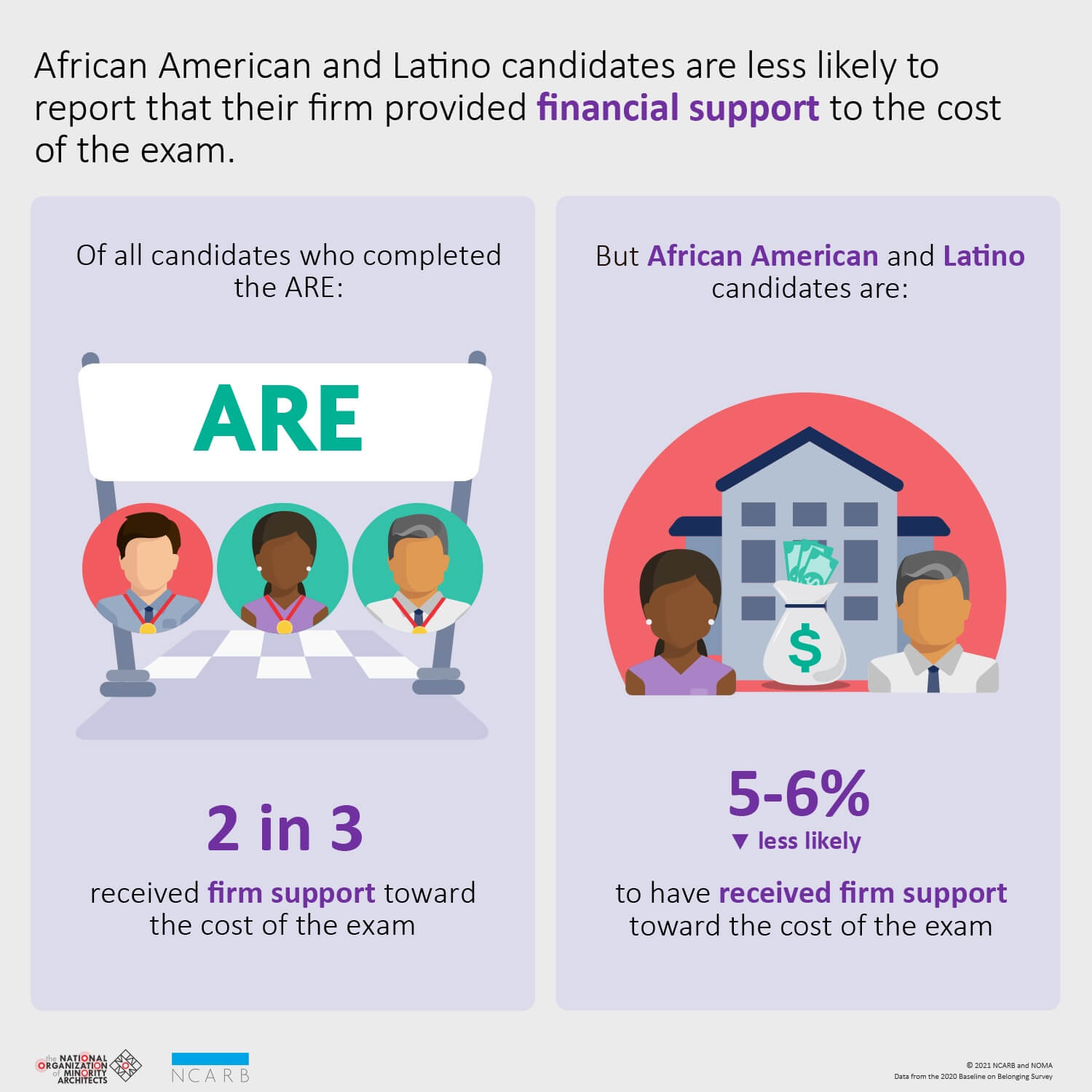
African American and Latino candidates more likely to report financial burdens impacting exam affordability:
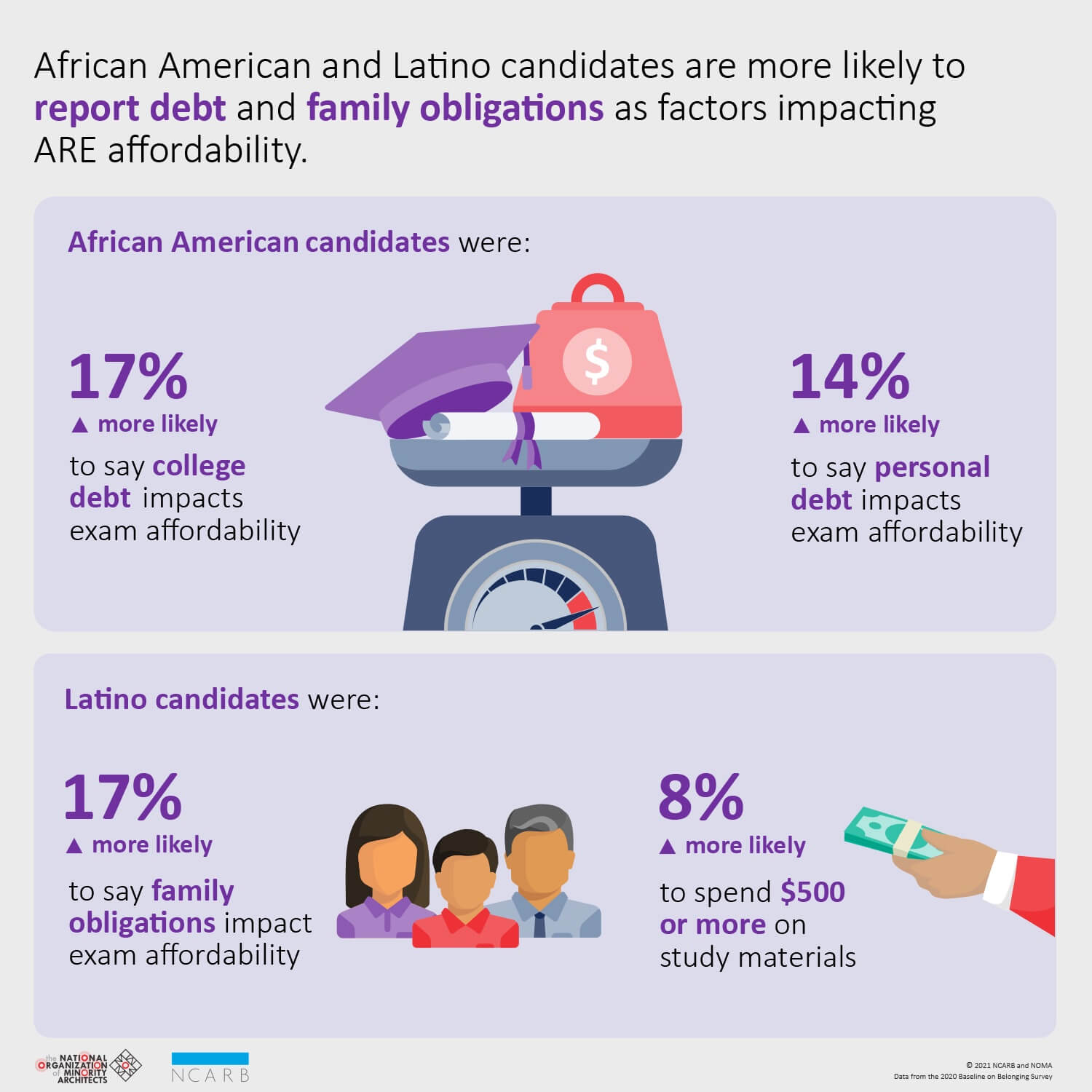
Candidates of color and women less likely to pass the exam:
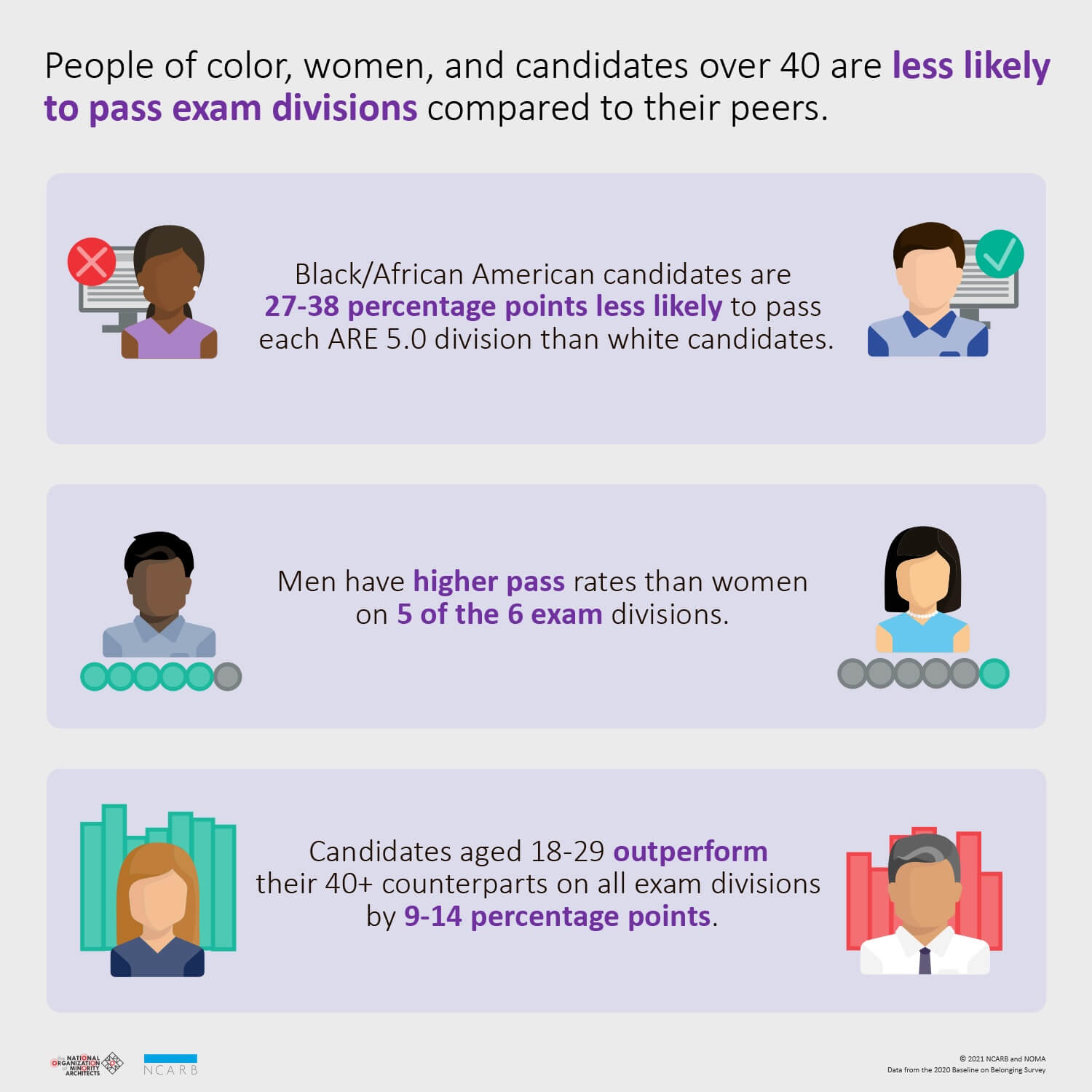
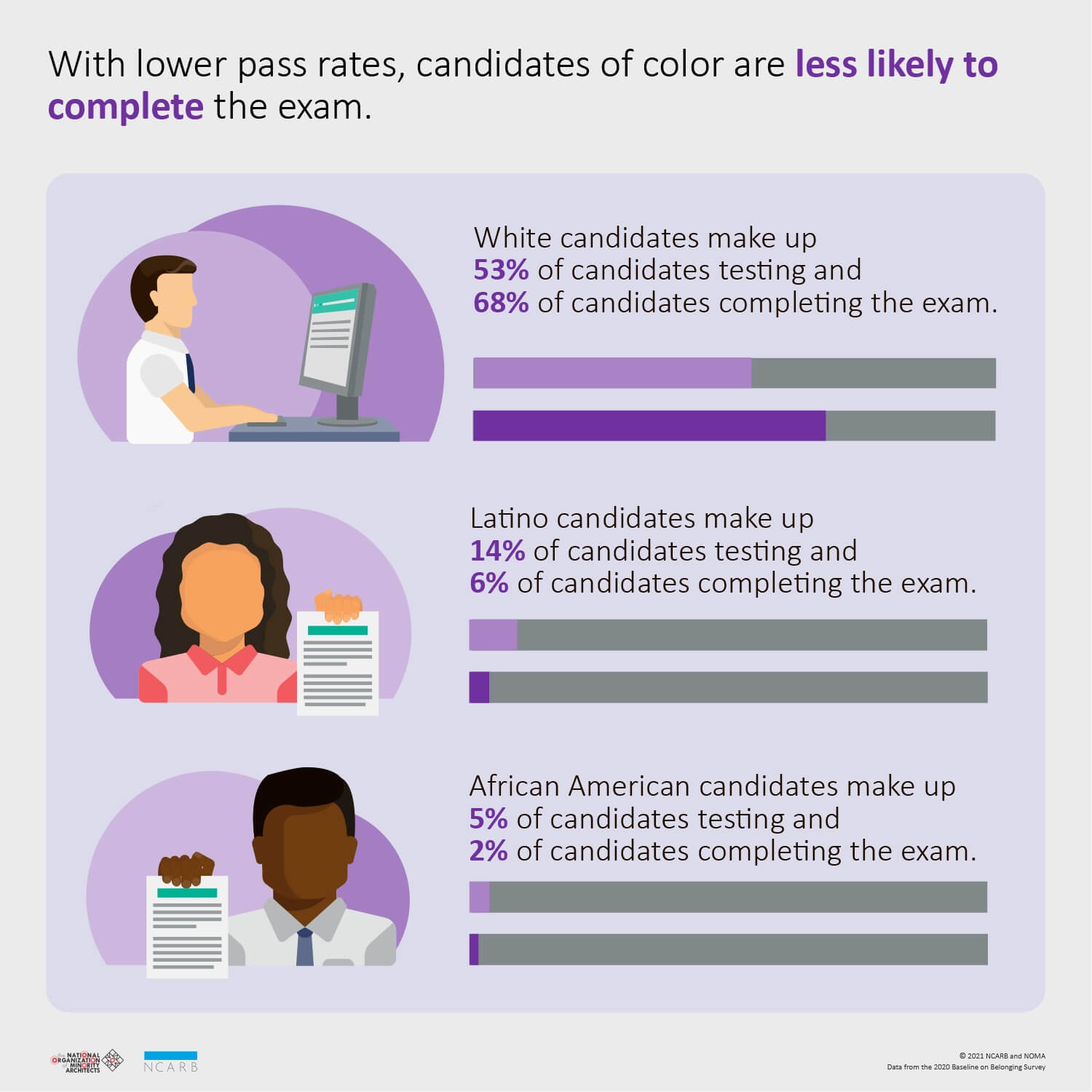
African American and Latina women experience disproportionate barriers related to exam affordability:
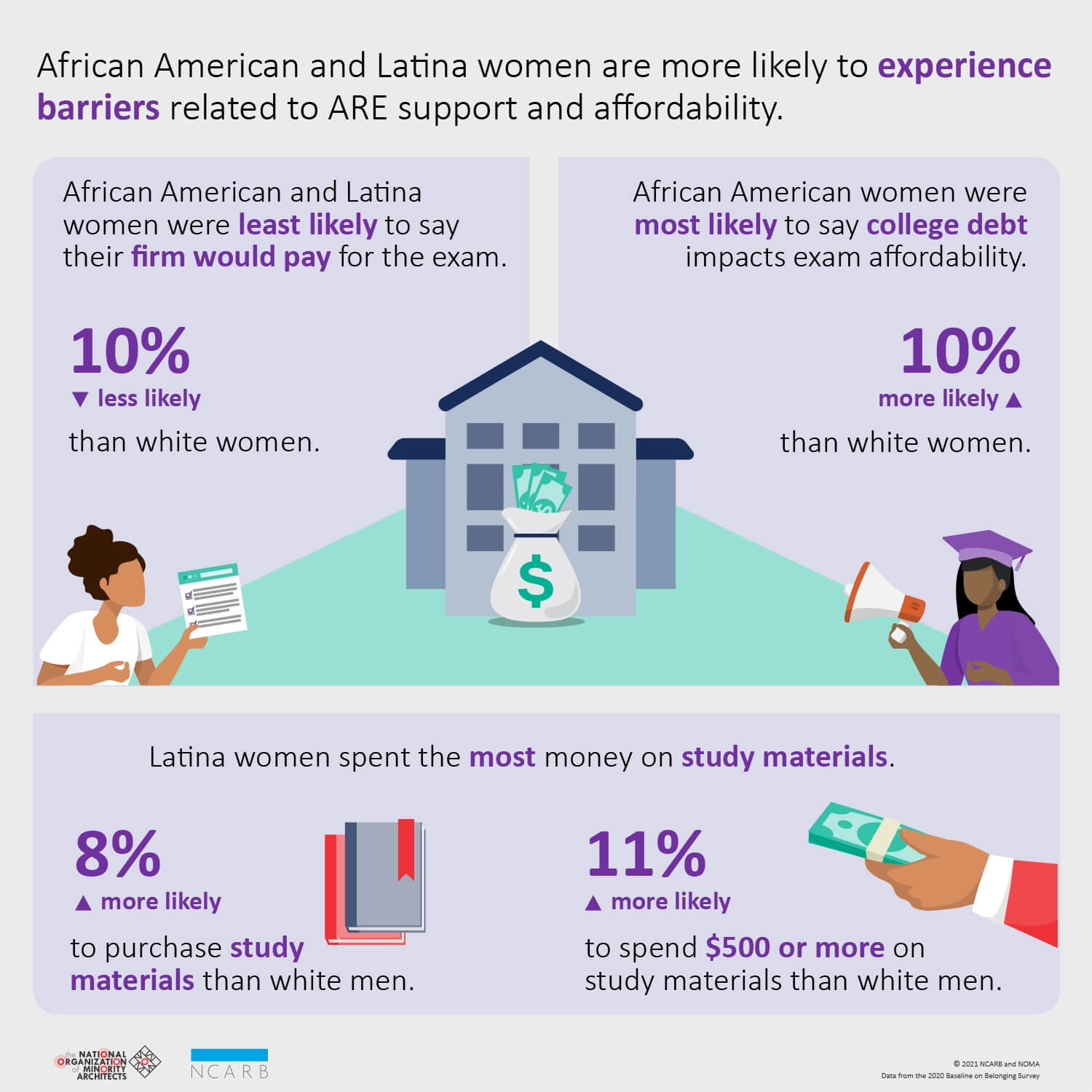
Older candidates less likely to receive firm support:
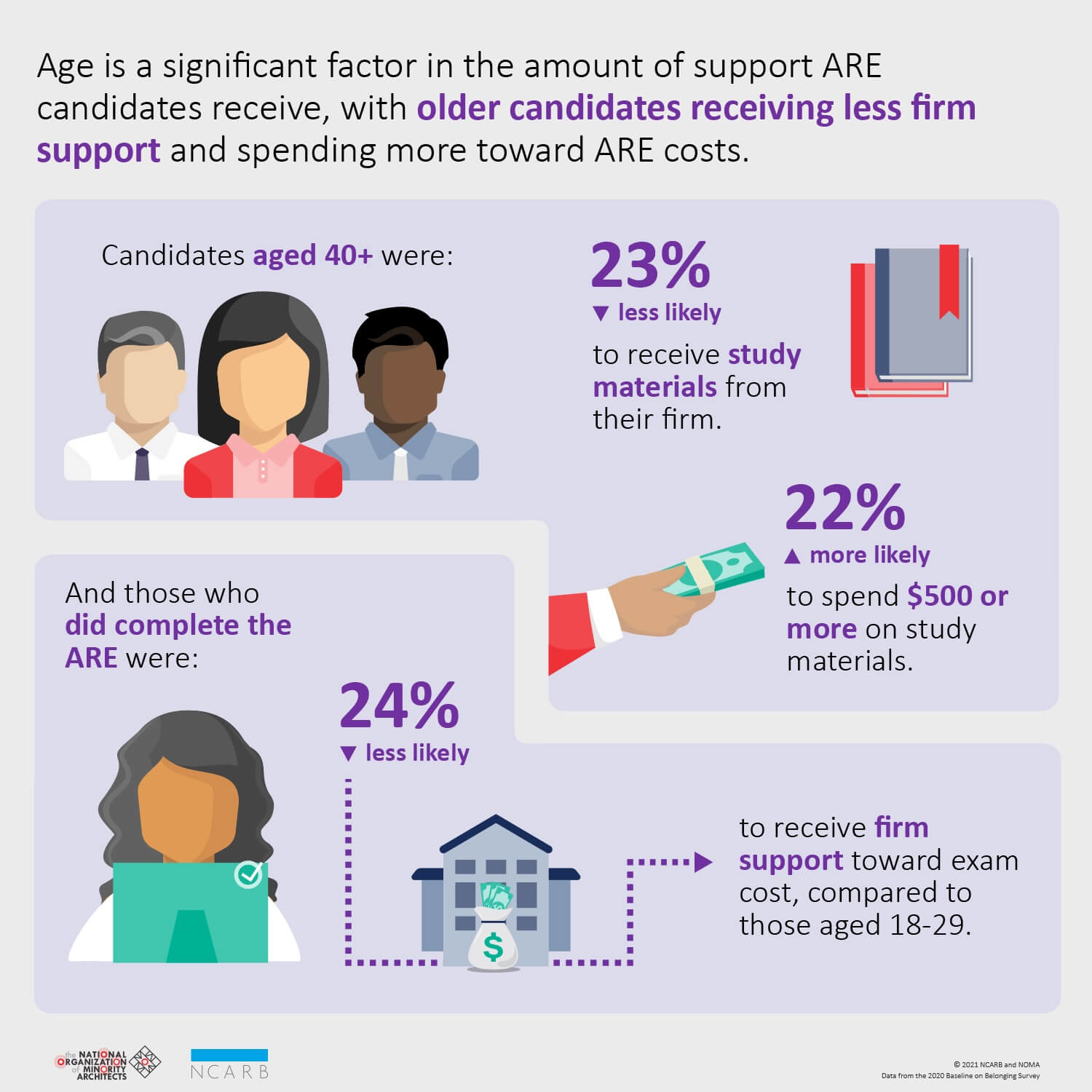
Large firms more likely to provide candidates with support:
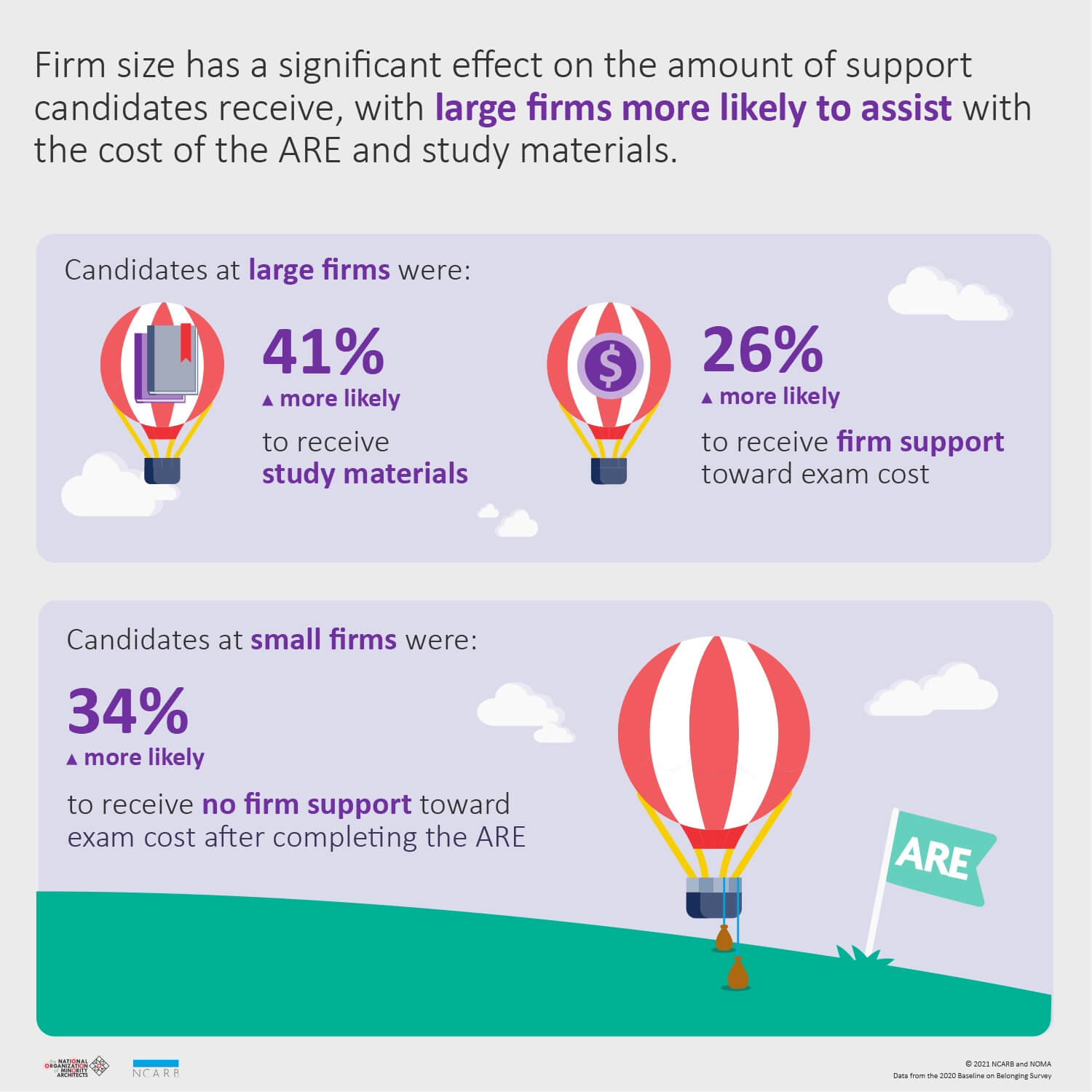
To further understand the underlying cause of the disparities highlighted above, NCARB and NOMA have committed to conducting focus groups and follow-up surveys. As noted by NCARB, forthcoming Baseline on Belonging reports on education, firm culture, and career development/employment may “yield additional insights into the disparities found in the experience and examination reports.”
“We know that people of color are more likely to stop pursuing a license. The findings from this survey help us identify why,” said Alfred Vidaurri Jr., a Fort Worth, Texas-based architect who, earlier this summer, was inducted as the first Latino president of NCARB in the organization’s 102-year history.
“We look forward to working with NOMA and the entire architecture community to explore the core causes of impediments on the path to licensure and present solutions,” added Vidaurri. “Together, we can ensure that the future of our profession better reflects the communities we serve.”








